When the front and rear suspensions work well, the ride quality improves and cornering becomes smoother, which are all good things. The shortcut to modifying the rear suspension is to replace the shock unit, but the condition of the lubrication of the swing arm pivot and moving parts of the linkage determines the operation of the rear shock. Remove the rear shock unit, stroke the swing arm, and if you feel reluctance to move or feel rattling, maintenance is necessary.
- Friction at the swing arm pivot interferes with the work of the rear shock.
- Whether the pivot is a bush or bearing, cleaning and greasing are essential.
Friction at the swing arm pivot interferes with the work of the rear shock.
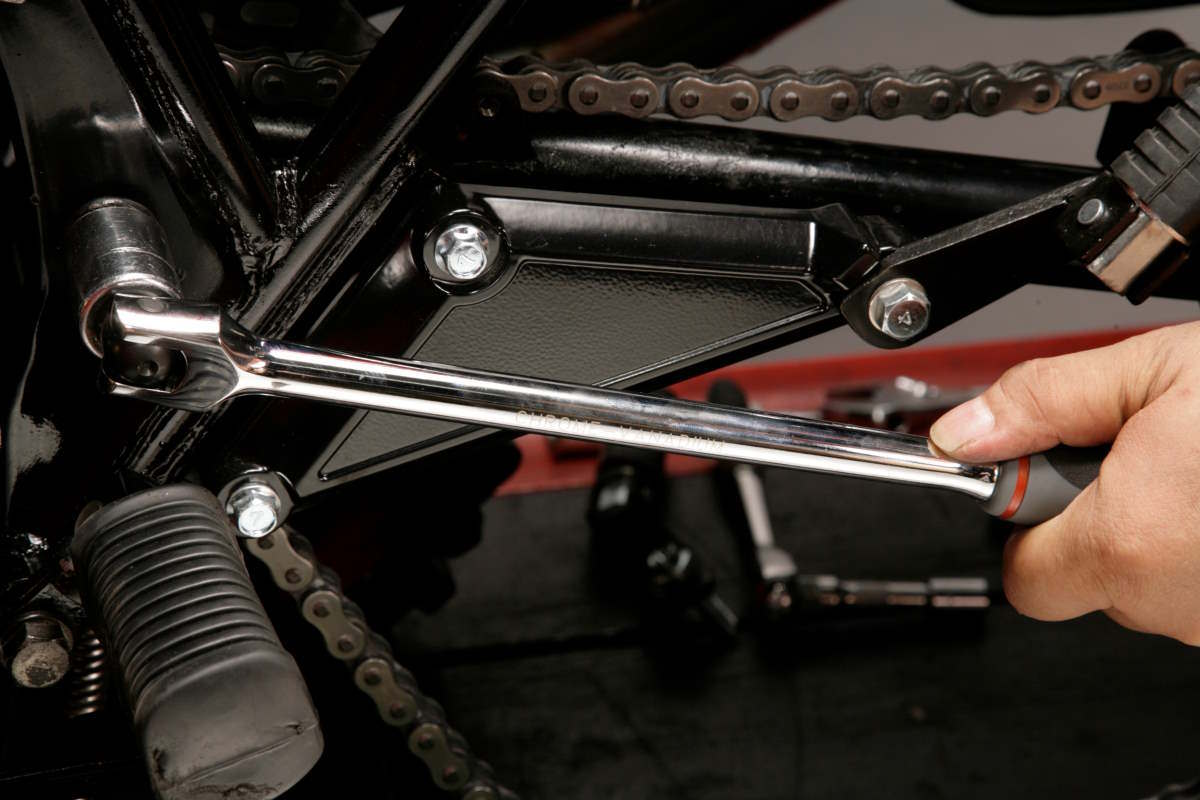

The swing arm pivot should stroke smoothly when tightened to the specified torque. If the movement becomes worse as the torque is increased, this may be due to wear of the bushing at the pivot and the spacer inside the swing arm.
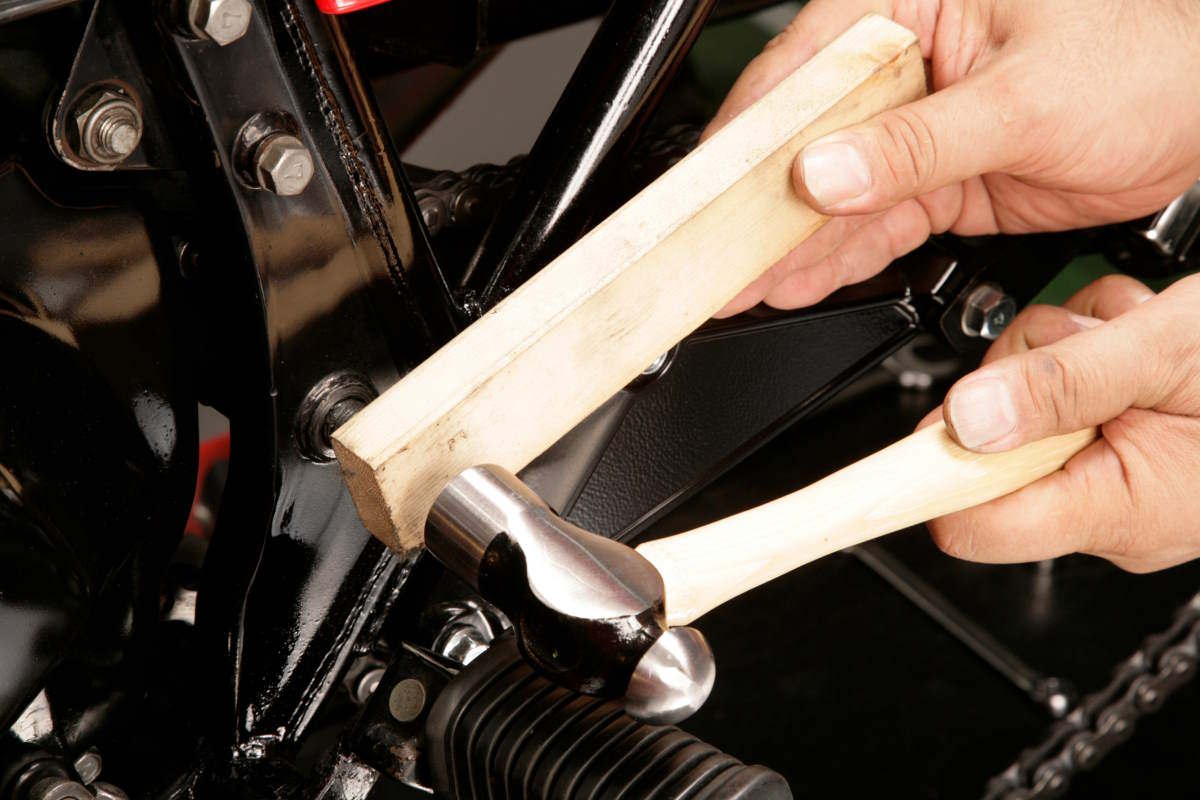

If the swing arm pivot shaft and the spacer inside the swing arm become rusted due to lack of maintenance, they cannot be easily removed by removing the nut. If the male screw at the end of the shaft is crushed, the nut will not be tightened, so it should be tapped with a hammer through a piece of wood or other material that will not damage the screw.
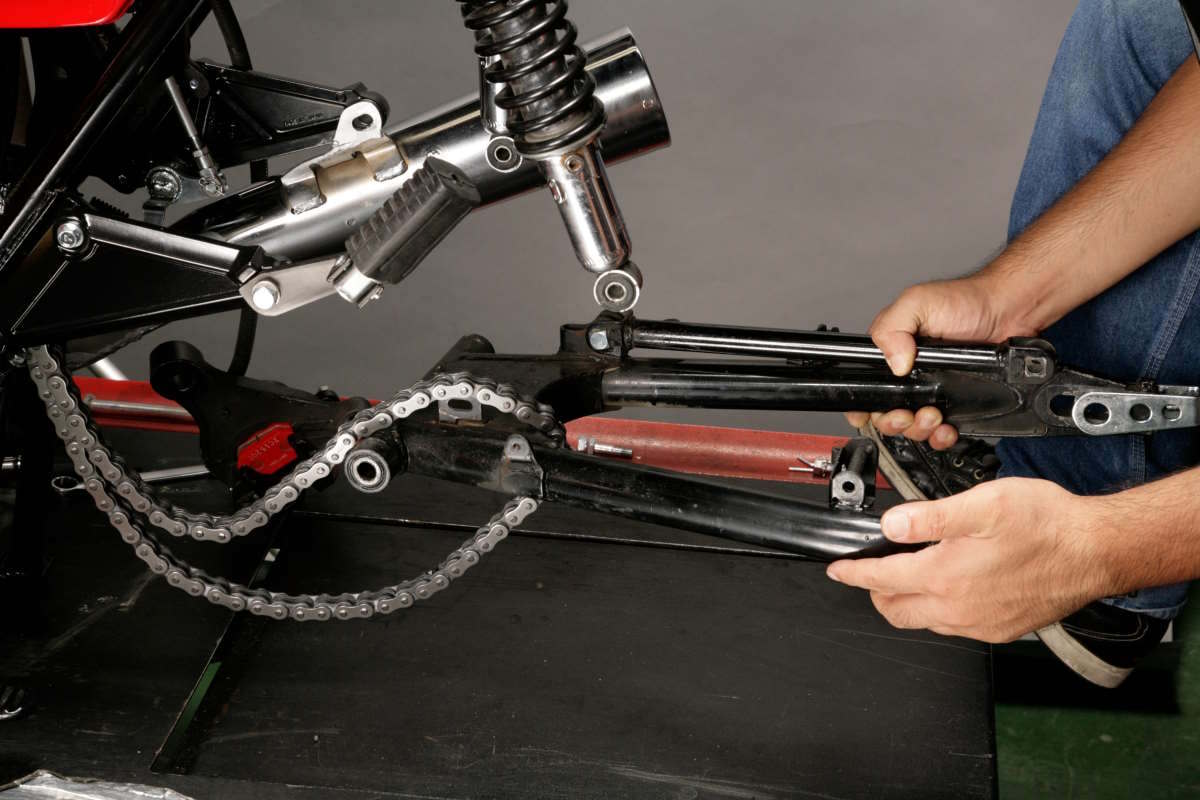

After removing the swing arm, check that the spacer in the pivot area rotates smoothly and can be pulled out.
Compared to front forks, rear shocks are easier to replace as an assembly and are often the focus of attention in customization and modification. OEM parts for Supersports models often have preload adjustment as well as extension and compression damping force adjustment, but for models without adjustment functions, old cars, and out-of-print cars, simply replacing with a high-performance shock is one of the most appealing features that will allow you to feel the change in ride quality and driving performance. When we think of sporty rear shocks, we tend to imagine a firm ride quality with hard springs, but in fact, it is also important to have a good start of a movement that responds linearly to small road surface changes and shocks. Ideally, the stroke of the rear shock should be linear in relation to the load applied to the suspension, but if it is stair-stepped, the suspension will not move until a certain load is applied, and then it will suddenly stroke after that load, resulting in poor ride quality and unstable body behavior. Whether or not the suspension moves smoothly under load depends not only on the performance of the rear shock but also on the lubrication of the swing arm pivot and links.
Due to the weight of the car plus the rider’s weight, the swingarm strokes even when the grease is dry.
However, even if the rear shock is replaced with a high-performance one if the pivot and links are stiff and dry of grease, the performance will not be achieved.
Whether the pivot is a bush or bearing, cleaning and greasing are essential.
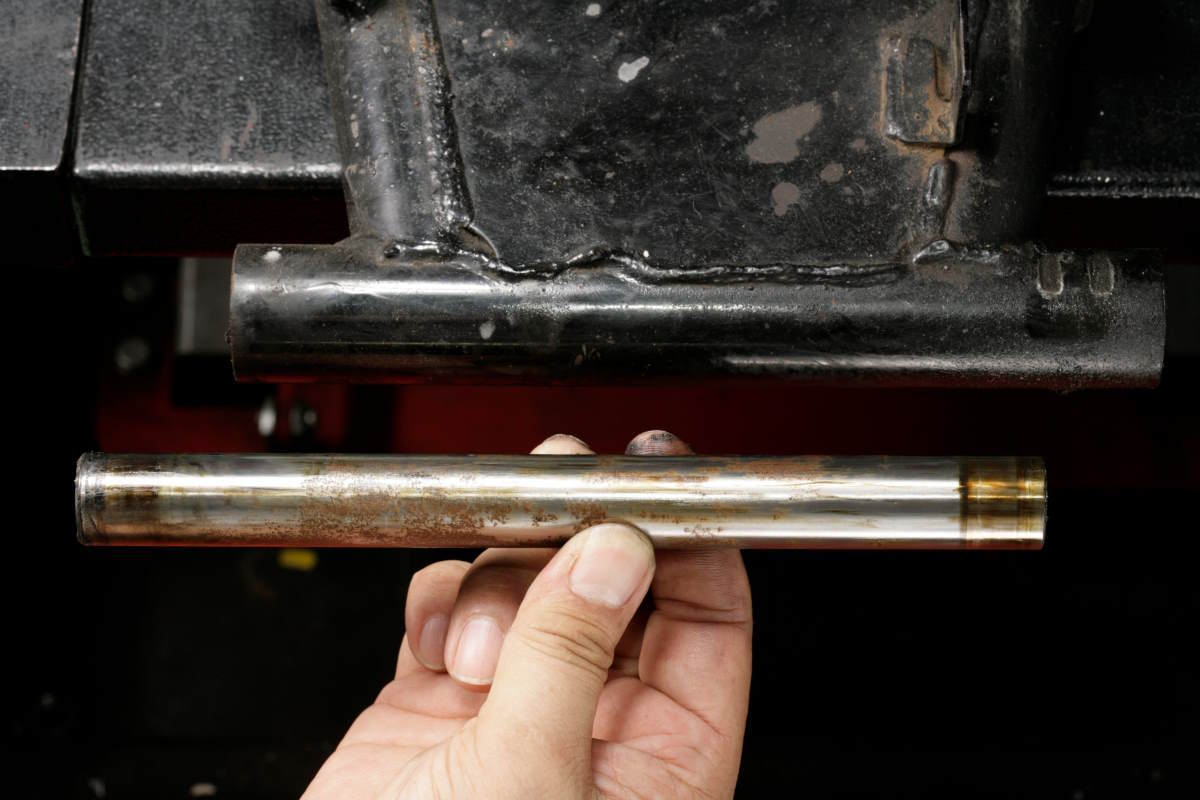

A bearing or bush is press-fitted into the swing arm pivot, a spacer of the image goes through it, and the pivot shaft goes through the inside of the spacer. The spacer and bearing or bush contact each other only at both ends, but if the middle part gets fat due to rust, it may get stuck on the spacer or bearing and cannot be pulled out. When assembling, apply grease not only to both ends but also to the middle portion to prevent rust.
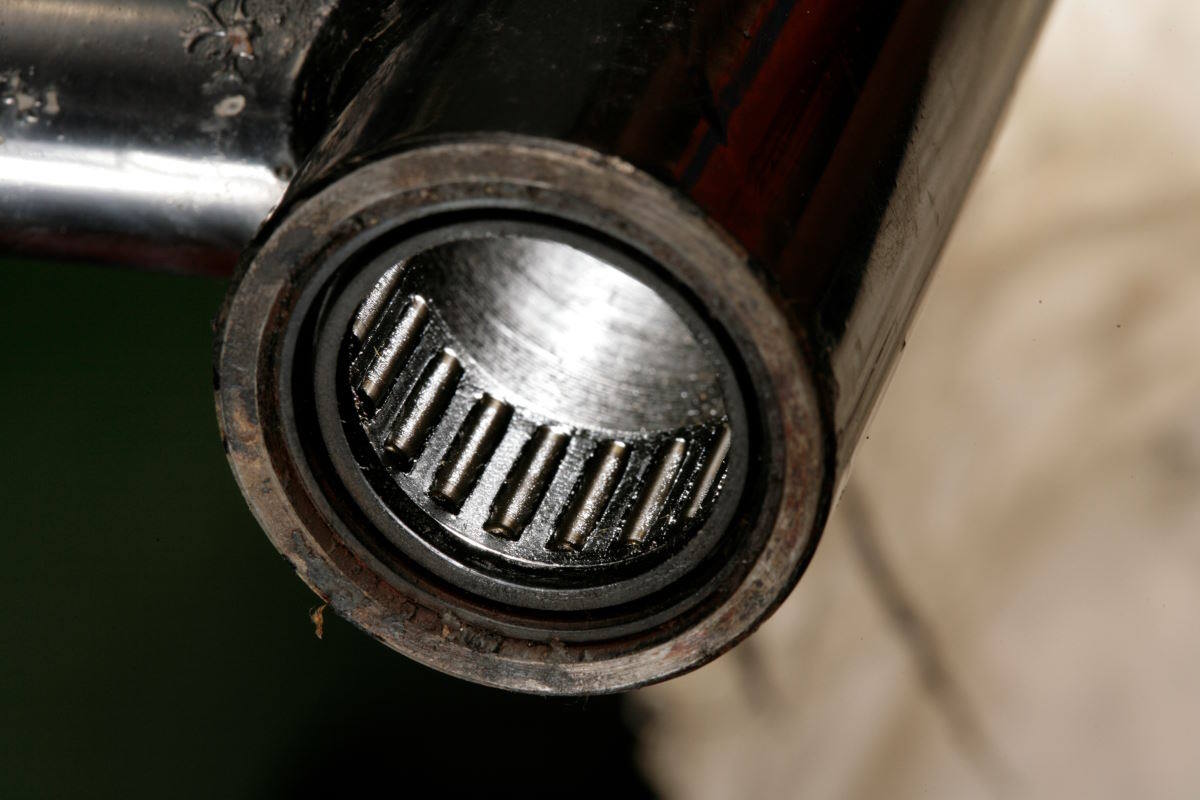

The pivots in the image are needle roller bearing type, and it is important to clean the old grease before applying new grease during maintenance.
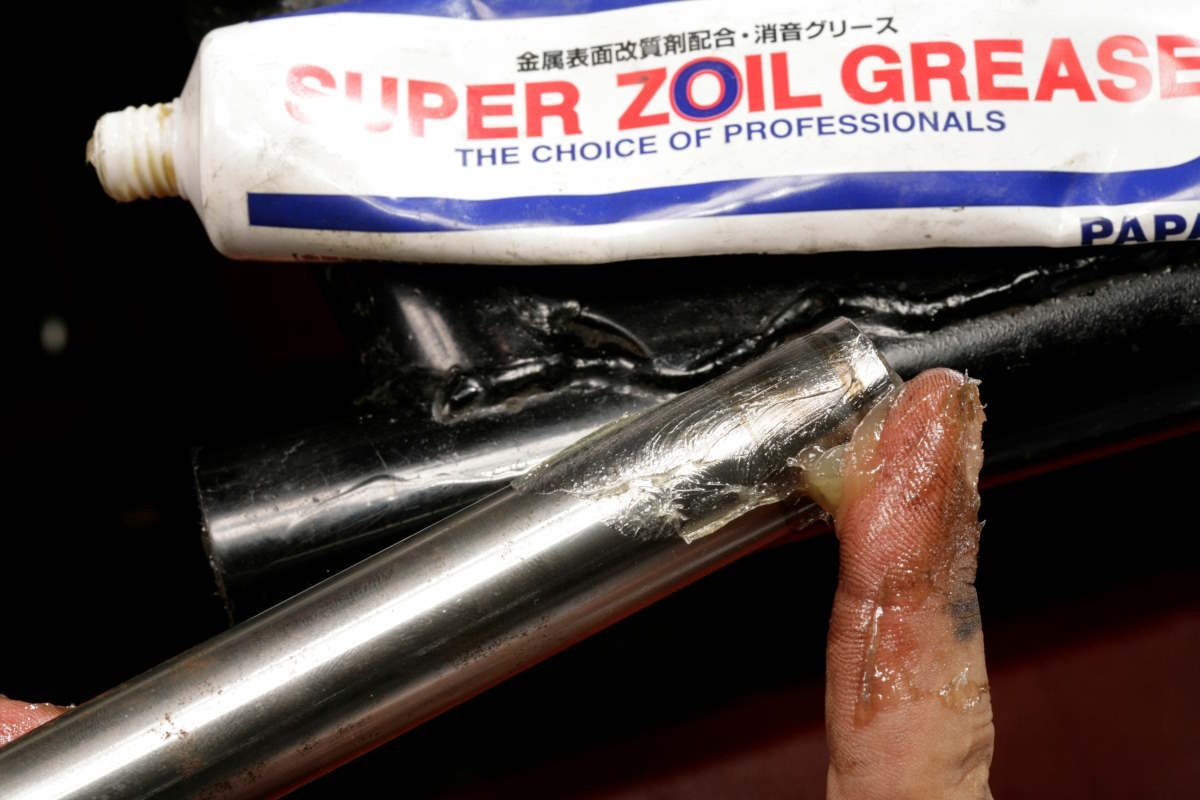

Grease is also applied to the spacer that contacts the bearing. Since strong force is applied to this part, super-zoyl grease or molybdenum disulfide grease with high extreme pressure properties is suitable.
Whether it is a 2-piece shock or a mono-shock, the condition of the pivots and links can be easily determined by stroking the swingarm with the shock removed. If the swingarm is lubricated properly, it should hang down smoothly under its own weight when the rear tire is removed and the rear shock is removed, either by putting on the center stand or by supporting the engine with a jack.
If it is reluctant to move or shows no sign of dropping, the pivot or linkage is in a very serious condition.
However, some mopeds have rubber bushings press-fitted into the swingarm pivot, and in such cases, you may experience poor movement due to torsion of the rubber caused by the tightening torque of the pivot shaft. If the swing arm is reluctant to move, pull out the pivot shaft, clean, and grease up the bearing or bushing.
At this time, check that the bushing or sleeve that contacts the bearing turns smoothly and that there is no uneven wear on the bushing or pivot shaft contact area. Since the swinging motion (stroke range) of the swing arm is limited, the bushings and pivot shafts will not be worn all the way around even if they are not well lubricated. Instead, since it is the part that supports the vehicle weight, a limited area may wear as if gouged, and in some cases, the hard chrome plating on the surface of the bushing may be worn away.
In such cases, the general rule is to replace the bushing with a new part. However, if the parts are difficult to obtain, such as in out-of-print cars, the situation may be remedied by changing the position or contact area where the bushing is installed.